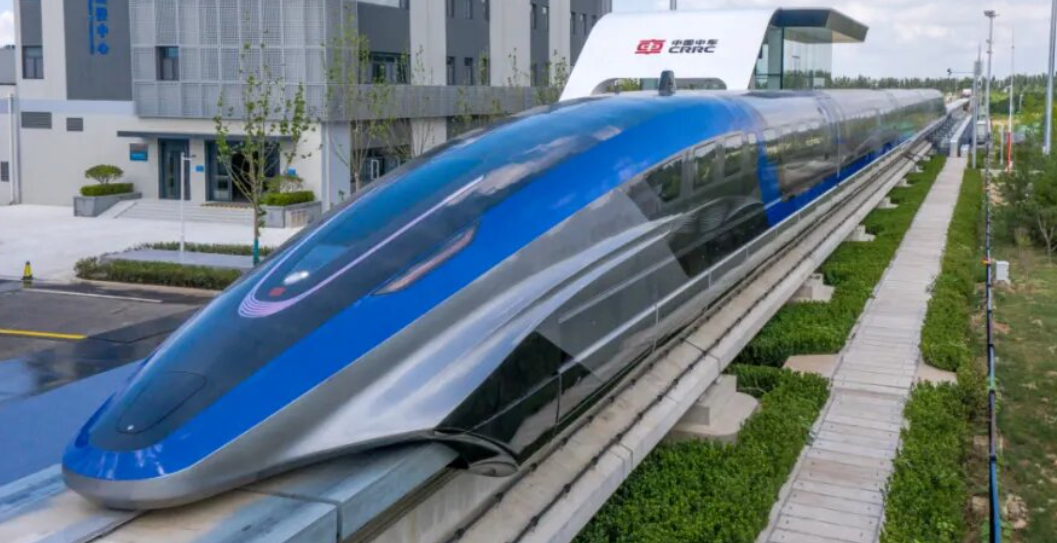
If Australia doesn’t spend ~$500 billion on nuclear submarines, destroyers and frigates over the next three decades it might be able to build fast rail.
Note we have identified funding for more housing, medibank and education. Some of this funding needs to go to alternative military spending, but not all of it.
The Maglev Option
The distance from Melbourne to Sydney and Sydney to Brisbane is about 900km. Melbourne to Adelaide is 720 km.
Any passenger service between these cities needs to complete the journey in under two hours to be competitive with air travel so an operating speed of over 450km/h is needed.
The only current option for this is elevated Maglev.
Since new fully grade separated track is required from end-to-end for high-speed rail, elevated maglev track is unlikely to be more expensive than legacy steel rail systems.
Mass production of track components would keep costs reasonable. Tunnelling needs to be avoided as it costs $billions per km.
The existing steel-rail track could be dedicated to freight and low-speed local trains.
Maglev manufacturers
- CRRC Maglev – 600km/h. New system, not yet in service.
- Transrapid Maglev – 500 km/h. Has operated in Shanghai since 2004. Transrapid has ceased operating but the patents are owned by Siemens and Thysenkrupp.
- Japan Rail Superconducting Maglev. Operates in a U shaped channel. Currently a straight-line system in a tunnel which is too expensive for Australia. May be able to be constructed above ground at a much lower cost. This technology requires wheels at low speed which adds complexity to the vehicle not found with the Transrapid and CRRC design.
Cost per km
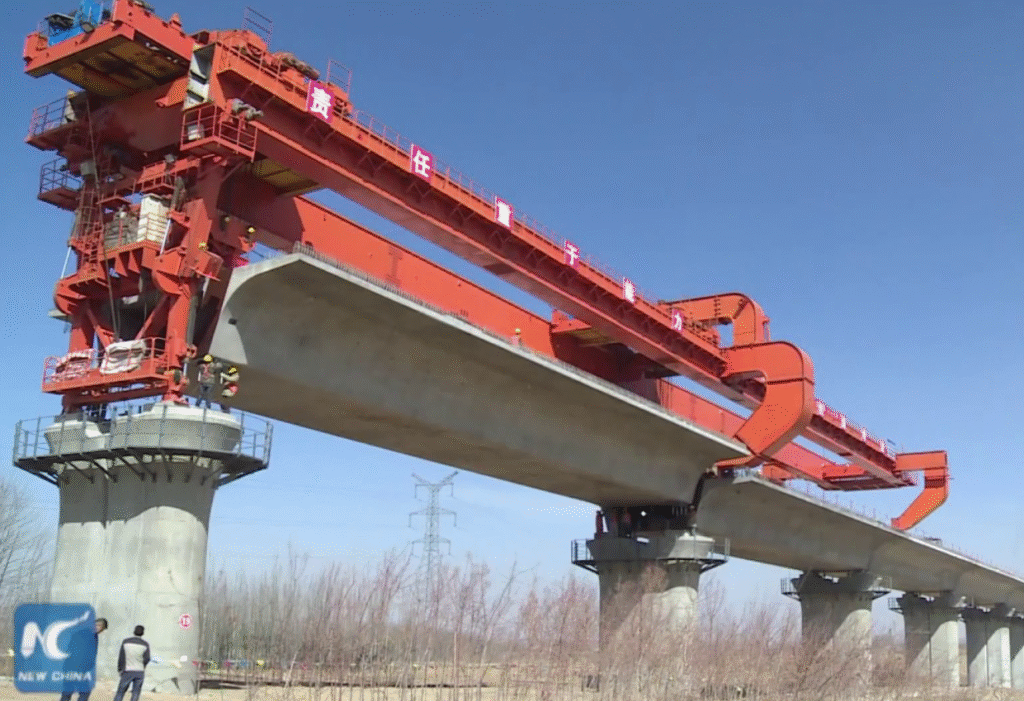
This can’t be known and could be prohibitive.
The scale of these projects implies automated mass production of track components by many ‘track machines’ working 7×24. Step 1 would be to build a factory to mass produce ‘track machines’ to mass produce the track and pillars.
The cost of maglev vs. the cost of conventional high speed steel rail track is expected to be similar. Maglev has the advantage of low maintenance costs as it is a non-contact system. These lower operating costs per km would be crucial in Australia.
Maglev Gallery
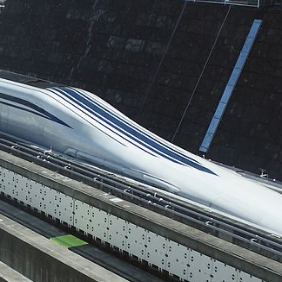
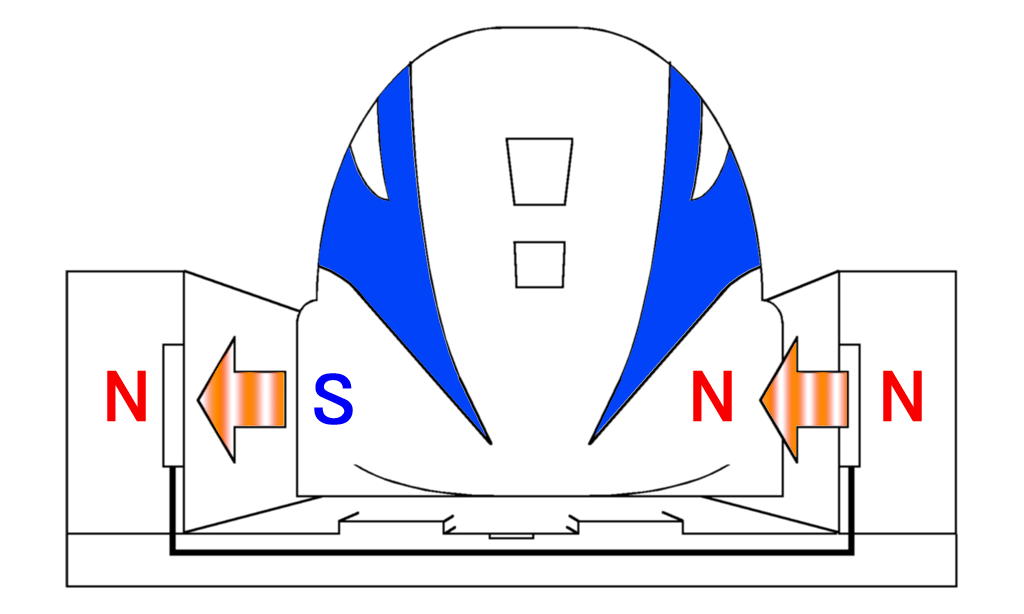
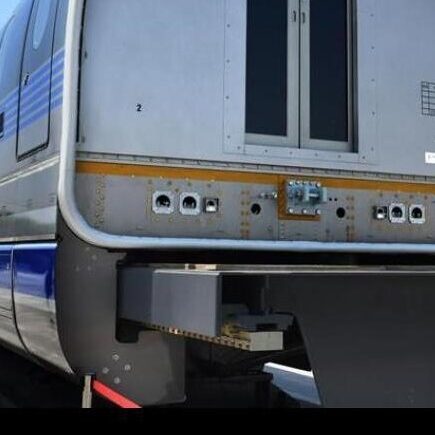
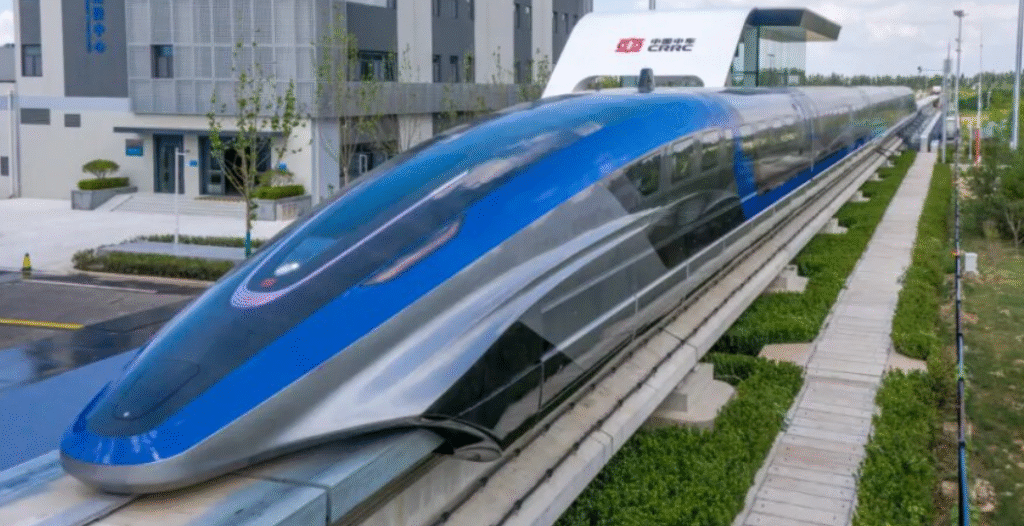
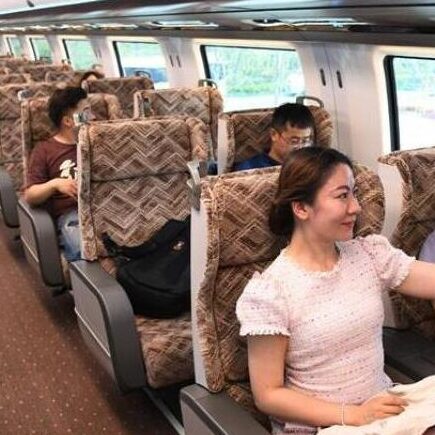
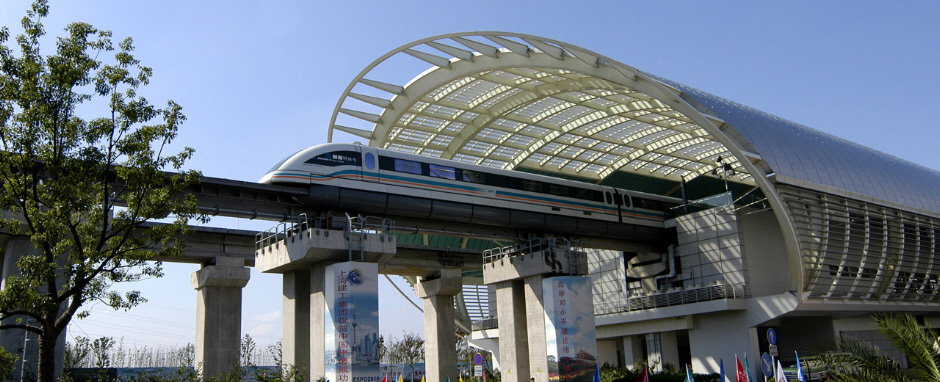
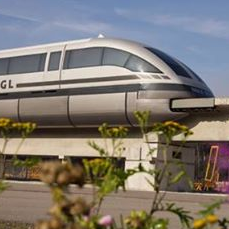
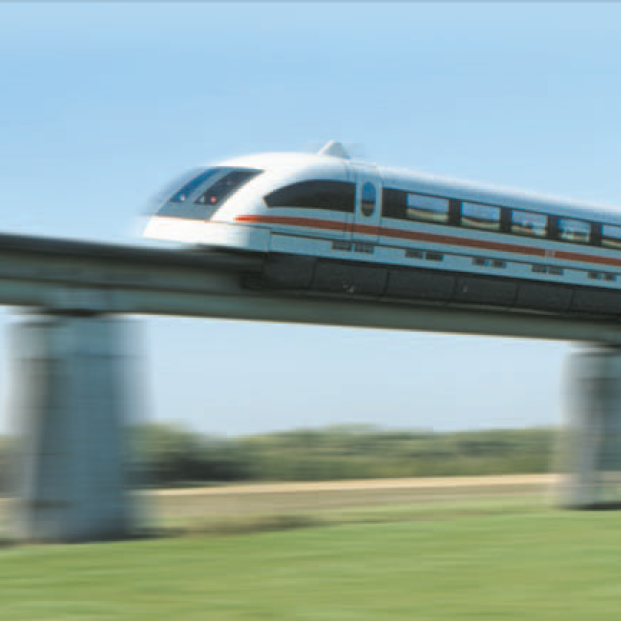
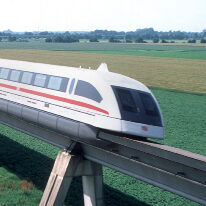
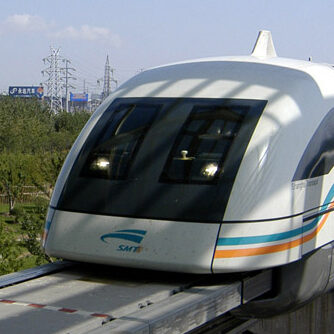
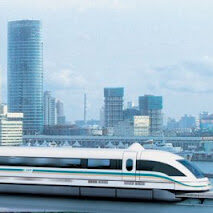
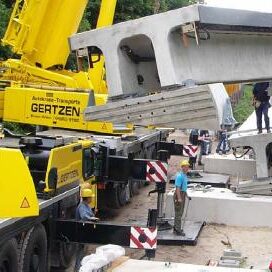
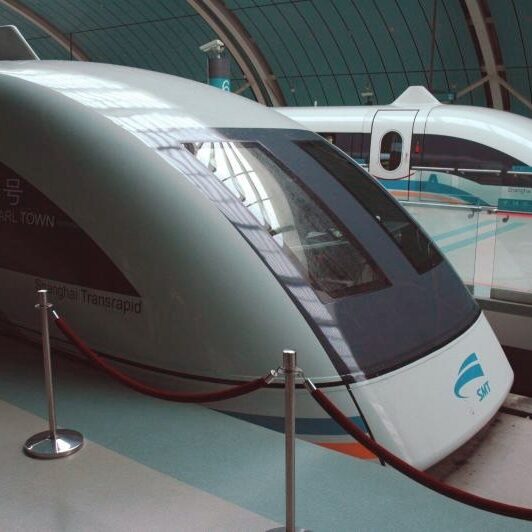
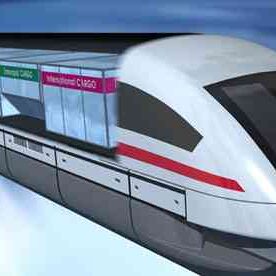
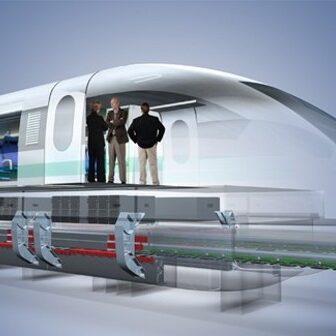
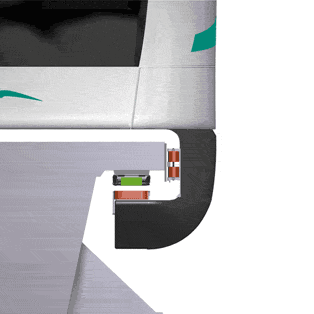
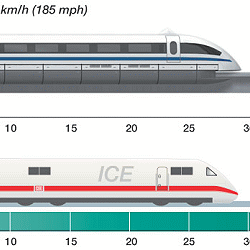
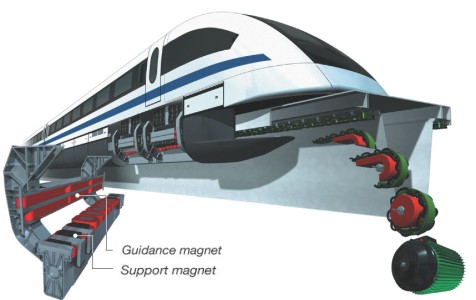
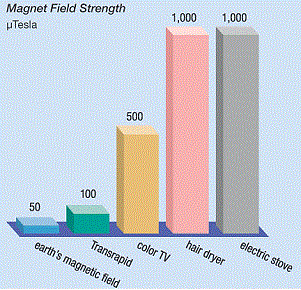
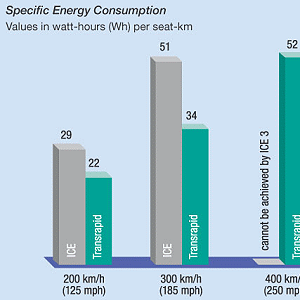
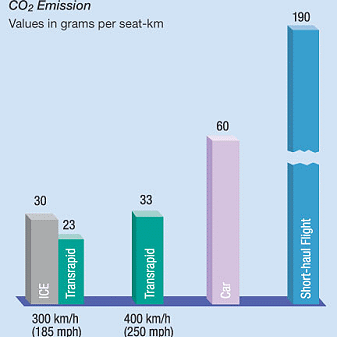
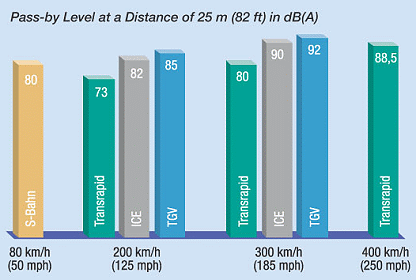
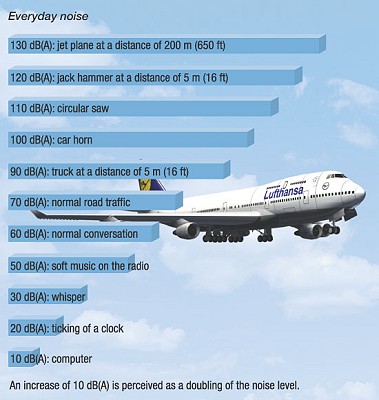
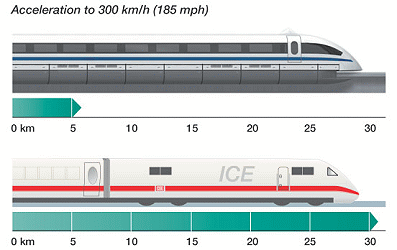
Why Maglev is not in widespread use
Previously maglev trains have failed to gain widespread use:
- In Europe, there is already a comprehensive network of high-speed rail trains. Given the short distances between cities there is insufficient benefit in rebuilding lines as maglev.
- In the USA the government does not support rail with funding leaving it all to the private sector which cannot acquire the easements.
- In China they have a high-speed steel rail network – but are now planning to supplement that with maglev.
- In UK and Australia maglev has been excluded from high-speed rail studies due to an insistence on using (the very congested) steel rail tracks at the city ends and the avoidance of ‘new’ technology.
- In 2006 Transrapid made the mistake of leaving a maintenance vehicle on the test track while operating a high-speed train which predictably resulted in a disastrous crash. This was used to prove ‘maglev was dangerous’ – despite the fact that the train did not derail even in this situation. Trains of any type should not use track that is being maintained!
- Tunnelling costs for the JR Maglev through seismically active mountains are used to prove maglev is more expensive than conventional rail that is not in a tunnel.
None of these are valid reasons to not use maglev in Australia which:
- Has great distances between cities
- Has no high speed rail network
- Can fully elevate the track to avoid $billion/km tunnelling costs that exist for any type of underground road or rail.
Geelong – Melbourne – Canberra – Sydney
This route avoids tunnelling as far as possible. The track is mostly elevated above or near existing major roads such as the M31 Hume Freeway.
The only way to reach the CBD’s is with extensive tunnelling so this route connects to existing train lines that feed into the various big cities.
Twin tracks are used as this is the busiest route.
- Geelong
- M1
- Avalon Airport
- M1 & across industrial wasteland
- Sunshine Station – Interchange to Melbourne Metro system. A few stops to the CBD.
- M80 ring road
- Melbourne Airport – Interchange to new SRL
- Cross country to the M31
- Wangaratta
- M31
- Albury
- M31, A25
- Canberra (Phillip Avenue Light Rail – May need to add a 10 km monorail loop to Parliament House to increase capacity)
- A23, M31
- Glenfield – Interchange to the T2, T5 & T8 lines (A 500m connector is needed from the M31 easement)
- M7
- Rooty Hill – Interchange to Western T1 and new T7 airport metro to the CBD and the Sydney metro system
Sydney – Brisbane
This is a single track with passing loops at the stations which need to be about 130 km apart to provide trains every 30 minutes.
- Rooty Hill – Interchange to Western T1 and new T7 airport metro to the CBD and the Sydney metro system
- M2 – ~10 km single tunnel – M1
- Central Coast (passing loop)
- M1
- Hexham (for Newcastle – passing loop)
- A1
- Port Macquarie (passing loop)
- A1
- Coffs Harbour (passing loop)
- A1
- Gold Coast (passing loop)
- A1 – M1 – M3
- Brisbane – Boggo Road / Park Road station interchange with all of Brisbane’s rail network a few stops from the CBD.
Adelaide – Melbourne
Follows M1 – A8 – M8 route for about 700 km.
- Adelaide Showgrounds – Interchange to most of Adelaide’s rail system 2 stops from Adelaide central station.
- R1 – A1 – M1 (Below ~150 km/h through the Adelaide Hills)
- Murray Bridge (passing loop)
- A8
- Keith (passing loop)
- A8
- Horsham (passing loop)
- A8 – M8
- Sunshine Station (Melbourne) – Interchange to near the centre of Melbourne’s rail system
Adelaide – Perth
At 2,136 km this would be a substantial undertaking!
Possibly it could be attempted using the track machines left over from the above lines.
At maglev speeds this would be a four-hour journey – down somewhat from three days & two nights now. Flying takes three and a half hours.
Many trains could cross the Nullarbor each day on a single track with a few passing places.